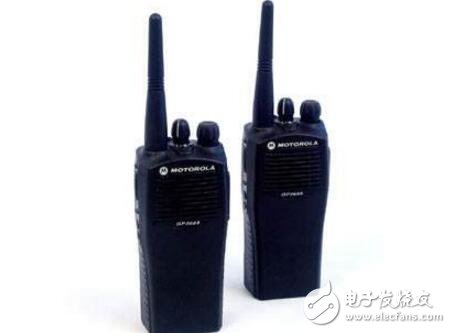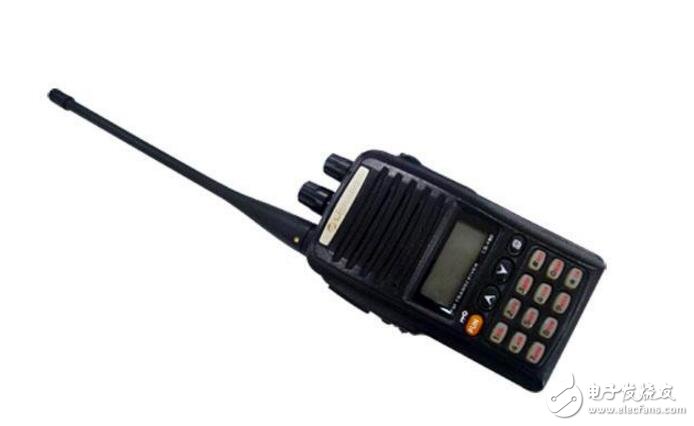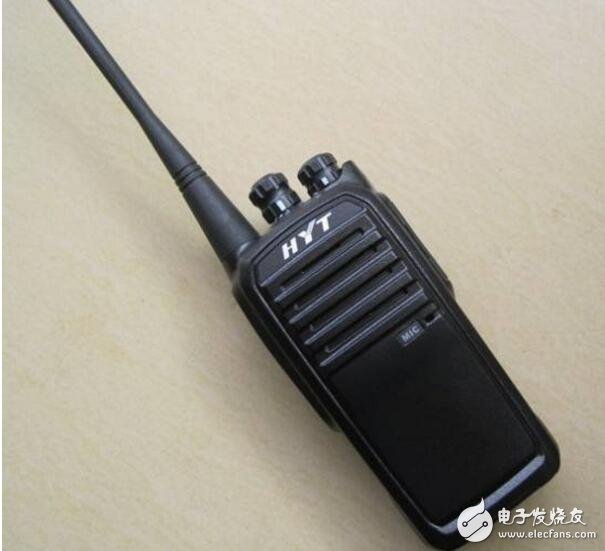The English name of the walkie-talkie is twowayradio, which is a two-way mobile communication tool that can talk without any network support, no call charges, and is suitable for relatively fixed and frequent calls. There are currently three types of walkie-talkies: analog walkie-talkies, digital walkie-talkies, and IP walkie-talkies. The walkie-talkie technology was first produced in the 1920s and was born in the WesTInghouse laboratory. An inexplicable inventor named John Kermode wanted to automate the sorting of postal documents. At that time, every idea of ​​the application of electronic technology was very novel. His idea is to make a walkie-talkie mark on the envelope. The information in the walkie-talkie is the address of the addressee, just like today's postal code. For this reason Kermode invented the earliest walkie-talkie logo, the design is very simple, that is, a "bar" means the number "1", two "bars" means the number "2", and so on. Then, he invented a walkie-talkie reading device consisting of basic components: a method capable of emitting light and receiving reflected light to measure the reflected signal strip and space, that is, an edge positioning coil; and a method of using the measurement result, namely, translation Code. 1. Launch part: The phase-locked loop and the voltage-controlled oscillator (VCO) generate the transmitted RF carrier signal, which is buffer amplified, stimulates the amplification, and the power amplifier generates the rated RF power. The antenna low-pass filter suppresses the harmonic components and then transmits them through the antenna. . 2. Receiving part: The receiving portion mixes the amplified signal from the radio frequency with the first local oscillator signal from the phase locked loop frequency synthesizer circuit at the first mixer and generates a first intermediate frequency signal. The first intermediate frequency signal further cancels the adjacent channel clutter signal through the crystal filter. The filtered first intermediate frequency signal enters the intermediate frequency processing chip, and the second local oscillation signal is mixed again to generate a second intermediate frequency signal, and the second intermediate frequency signal is filtered and removed by a ceramic filter to filter out unwanted spurious signals. Generate an audio signal. The audio signal is amplified by amplifying, bandpass filter, de-emphasis, etc., into the volume control circuit and the power amplifier to amplify, drive the speaker, and get the information people need. 3. Modulation signal and modulation circuit: The voice of a person is converted into an electrical signal of audio through a microphone 4. Signaling processing: The CPU generates a CTCSS/CDCSS signal that is amplified and adjusted to enter the voltage controlled oscillator for modulation. The low frequency signal obtained after receiving the frequency discrimination is filtered and shaped by the bandpass filter of the amplification and sub-audio, enters the CPU, compares with the preset value, and controls the output of the audio power amplifier and the speaker. That is, if it is the same as the preset value, the speaker is turned on, and if it is different, the speaker is turned off. Handheld wireless walkie talkie This is a small, lightweight, low-power wireless walkie-talkie, suitable for hand-held or bagged, easy for individuals to carry around, can communicate in communication, its power is generally no more than 5W VHF band, UHF band does not exceed 4W . The communication distance is generally 5 kilometers in the open area without obstacles. The machine is suitable for communication between mobile personnel in various situations at close range. In the series of wireless telephones, the number and variety of handheld radio "interphones" are the most, accounting for more than 80%. Car (ship, machine) carrying wireless walkie-talkie This is a wireless walkie-talkie that can be installed on vehicles, ships, airplanes and other vehicles directly from the power supply of the vehicle, and uses the antenna of the ship (ship, machine), mainly used for transportation, production scheduling, security command. And other business. Its large size, power is not less than 10W, generally 25W. The maximum power is 56W for VHF, 50W for UHF, and the communication distance can reach more than 20 kilometers. Repeater The relay station forwards the signal of a certain frequency band directly through its own transmitter to other frequencies. The two sets of different frequency signals do not affect each other, or can allow two groups of users to communicate on different frequencies. It has the characteristics of full-duplex operation of transmitting and receiving at the same time without interfering with each other. Simplex wireless walkie-talkie for simplex communication Simplex communication means that at the same time, information can only be transmitted in one direction. You say I listen, I said you listen. This type of transmission and reception can only work alternately. A radio intercom that cannot work at the same time is called a simplex machine. Duplex communication means that information can be transmitted in both directions at the same time. Just like making a call, you can listen while speaking and listening. In terms of design technology, radios can be divided into analog walkie-talkies (also known as traditional walkie-talkies) designed with analog communication technology, and digital walkie-talkies designed with digital technology. A radio walkie-talkie designed and manufactured to meet the needs of radio enthusiasts. This kind of walkie-talkie can also be called "playing machine". For this amateur personal radio service, each country has opened up a dedicated frequency band for use by amateur radio enthusiasts. The frequency bands opened in China are 144~146MHZ and 430~440MHZ, which are also commonly used in countries all over the world. In October 2001, the National Radio Administration of the Ministry of Information Industry issued the "People's Republic of China Radio Frequency Plan" for amateur radio enthusiasts and amateur services. "Amateur service: for amateur radio enthusiasts to self-train, communicate and Radiocommunication services for technical research. Amateur radio enthusiasts refer to those who are formally approved and interested in radio technology. Their interests are purely personal hobbies and do not involve profit." Due to the limited frequency range of radios, the environment used Conditions and usage requirements are different from professional walkie-talkies. The main feature of the amateur machine is that it has a small size, complete functions, and frequency scanning. The frequency can be directly set on the panel and the frequency point is displayed on the panel. Its technical specifications, equipment stability, frequency stability, reliability and working environment are also worse than professional radios. The direct result is that the cost of amateurs is also lower to accommodate the needs of individual purchases [1]. Professional radios: Users of professional radios are mostly used in the professional business of group teams. Therefore, the professional radio walkie-talkie is characterized by simple and practical functions. In the design, there are a variety of communication interfaces for users to make secondary development. Most of the frequency report settings are through computer programming, the user can not change the frequency, the panel displays only the number of channels, does not directly display the frequency point, the frequency confidentiality is better, the frequency stability is also higher, and it is not easy to run. In the long-term work, its stability and reliability are high [1]. Public radio intercom Public walkie-talkies, commonly known as civilian walkie-talkies. There is no need to approve the use of the public walkie-talkie, no frequency occupancy fee, no call charges, anyone can purchase and use. However, such public walkie-talkies have clear regulations on frequency, power and technical indicators. As a public walkie-talkie, the technical specification stipulates that the programming operation function cannot be set on the front panel of the walkie-talkie. The purpose is to prevent the user from expanding the frequency range and modifying the work parameters. According to the regulations, the public walkie-talkie can only display the number of channels and cannot display its working frequency. At the same time, it is also stipulated that public walkie-talkies can use sub-audio technology (CTCSS) below 300HZ, commonly known as anti-interference code or private line to prevent interference with the same frequency of the walkie-talkie [1]. Police wireless walkie-talkie The police wireless walkie-talkie is a walkie-talkie for wireless communication services for the public security, procuratorial, court, judicial, security, customs, military, and armed police departments [1]. Digital wireless walkie-talkie It is widely used in monitoring, monitoring and alarming systems for industrial automation control such as hydrology and water conservancy, power grid, railway and highway, gas oil field, oil and gas supply, meteorological earthquake, surveying and mapping, and environmental protection logistics. Its fields of use and departments are very broad, involving all aspects of national economic construction and people's lives, such as power dispatching and monitoring of power load, monitoring of power distribution stations, monitoring of hydrological conditions, data collection of reservoirs, and urban water supply. System monitoring, monitoring and monitoring of sewage treatment systems, monitoring of urban street lights and traffic lights, control of air defense alarms, monitoring of oil well network management, monitoring of oil and gas transmission network management, wireless meter reading of industrial intelligent instruments (near, remote water, electricity, Gas meter), monitoring and monitoring of expressway traffic network, urban bus vehicle dispatching, railway signal emergency communication system, railway water supply centralized control, GPS positioning and GIS data information transmission, seismic private network data transmission, atmospheric environment monitoring, special Mobile data communication system, financial securities transaction communication system, real-time lottery transaction system, postal system POS networking, vehicle logistics warehouse supervision, mine mapping, exploration and production monitoring, metallurgical chemical system industrial automation control, security fire monitoring. In these systems, the data of the remote collection point is transmitted to the monitoring centers at various levels in real time and reliably through the digital radio station, and the control commands of the monitoring centers at all levels are received, thereby realizing the real-time transmission of the remote data. It is a dedicated wireless data transmission channel in the wireless data transmission system, which is an indispensable part of the system. In many cases, it is embedded in various instruments and equipments. Marine wireless walkie-talkie Wireless walkie-talkies that are used exclusively for maritime navigation on maritime ships and for wireless communication with shores are called sea radios, also known as ship stations. Aviation wireless walkie talkie The aviation radio intercom, also known as the aircraft radio, is specially used for wireless communication between the ground and the aircraft, between the pilot and the pilot. It is an indispensable communication tool for ensuring safe and effective air traffic management in air flight.
Product Features:
â—† Large color touch
screen with intuitive interface provides an excellent intuition operational
experience
â—† 3-phase input
voltage meets worldwide power distribution regulation, AC mains
187~253Vac/340~460Vac for optional
â—† Constant voltage
(CV), constant current (CC) and constant power (CP) operation mode, CC or CV
working priority setting
â—† Adjustable voltage/current slew rate
â—† DDS Arbitrary
function generator*
â—† Solar panel I-V
curve simulation function*
â—† Smart 3-stage
charging algorithm simulation*
â—† Battery simulator
function*
â—† Continuous source
& sink function, with APM DC E-load to expand loading capability (optional)
â—† List/ Step mode
programming
â—† TTL/Analog control
and monitoring
â—† Built-in standard
automotive power network voltage curves*
â—† Full protection:
OVP, OCP, OPP and OTP protection
â—† Supports
master-slave mode, paralleling up to 16 units
â—† Supports SCPI commands,
provides web GUI function
* Only professional
version units support these functions
2250V DC Power Supply,3U Power Supply APM techonologies,6U Power Supply APM techonologies APM Technologies Ltd , https://www.apmpowersupply.com


What is a walkie-talkie